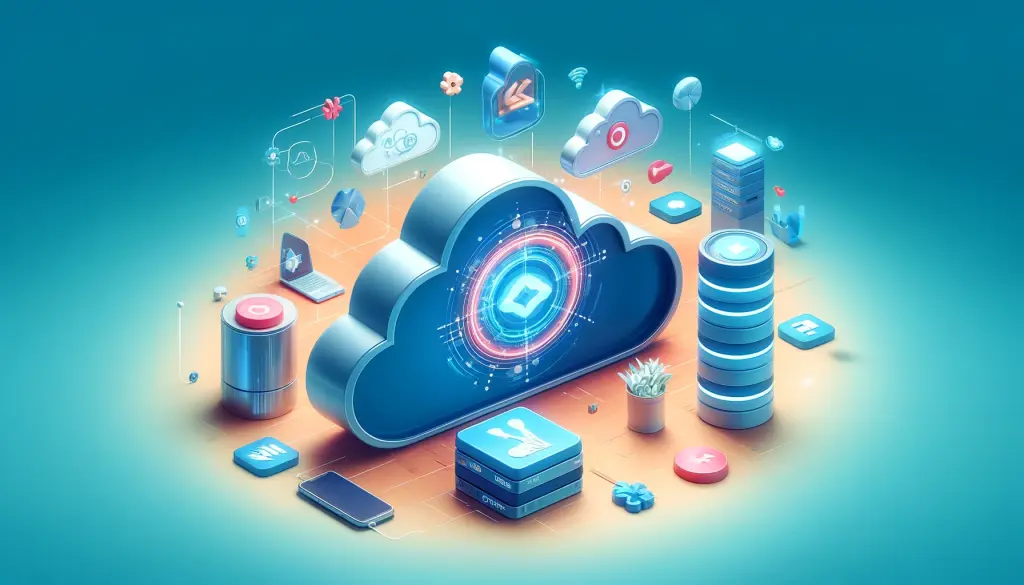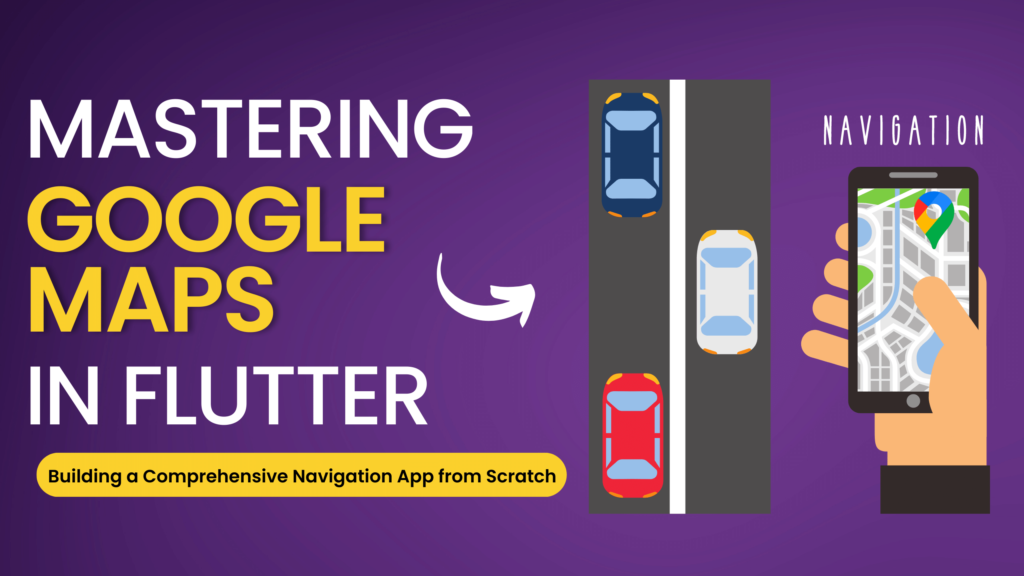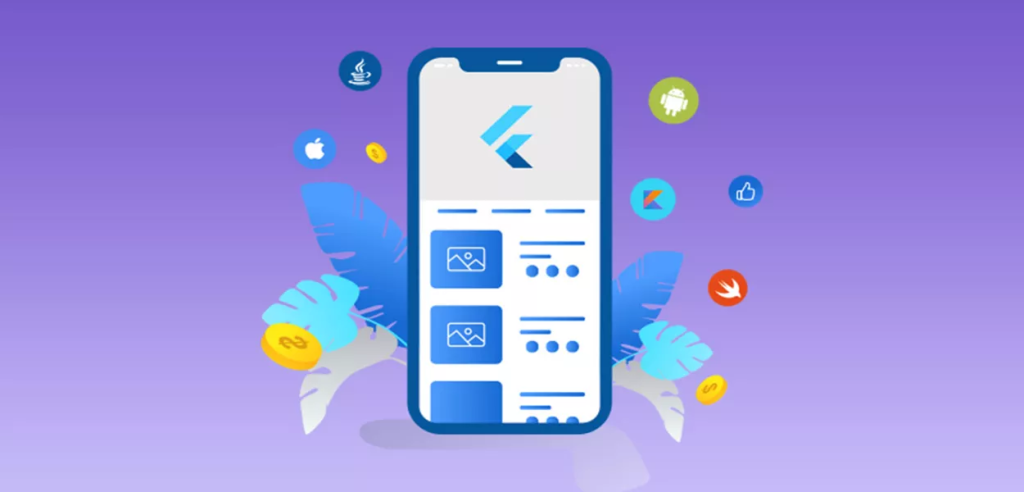Serverless architecture represents a paradigm shift in app development, offering a way to build and run applications without the burden of managing server infrastructure. This model, where the cloud provider dynamically manages the allocation of machine resources, has become increasingly popular due to its efficiency, scalability, and cost-effectiveness. When combined with Flutter, a modern UI toolkit for crafting natively compiled applications across mobile, web, and desktop from a single codebase, serverless architecture unlocks new potentials for developing scalable and efficient apps.
Overview of Serverless Architecture
Serverless architecture allows developers to focus solely on writing code and defining how their application behaves in response to events, requests, and triggers. In this model, the execution environment, from servers to runtime engines, is fully managed by cloud service providers. Developers deploy functions — discrete, stateless units of code — which are executed in response to various events. This architecture is inherently scalable, as the cloud provider automatically adjusts resources to meet demand, ensuring that apps can handle varying loads without manual intervention.
Benefits in App Development
- Cost Efficiency: With serverless computing, you pay only for the compute time you consume, eliminating the cost of idle server capacity.
- Scalability: Automatic scaling ensures that your application can handle increased loads without needing to provision additional resources manually.
- Reduced Operational Overhead: Managing servers, runtime environments, and infrastructure scaling are handled by the cloud provider, reducing the operational complexity.
- Faster Time-to-Market: Serverless architecture simplifies deployment processes, enabling faster delivery of new features and updates.
Synergy with Flutter
Flutter’s design philosophy of building beautiful, natively compiled applications for multiple platforms aligns well with the serverless approach. Flutter’s efficient development process, hot reload feature, and comprehensive widget library, combined with serverless backend services, create a powerful ecosystem for building dynamic, data-driven applications. This combination facilitates:
- Rapid Development Cycles: Quick frontend iterations in Flutter with backend logic handled by serverless functions speed up the development process.
- Unified Experience Across Platforms: Serverless architecture supports the cross-platform capabilities of Flutter, allowing developers to create consistent user experiences on various devices.
- Enhanced Performance and Reliability: Flutter’s high-performance rendering engine, coupled with the robust and scalable nature of serverless backends, ensures that applications are fast and reliable.
Understanding Serverless Architecture
Serverless architecture, a significant evolution in cloud computing, has reshaped how developers build and deploy applications. This section delves into the definition, key characteristics, and operational mechanics of serverless architecture, highlighting its benefits for both developers and businesses.
Definition of Serverless Architecture
Serverless architecture is a cloud computing execution model where the cloud provider dynamically manages the allocation and provisioning of servers. Contrary to its name, “serverless” doesn’t mean servers are absent but rather that developers are relieved from server management duties. In this model, applications are broken down into individual functions or services that run in response to events, such as HTTP requests, database changes, or specific triggers from other cloud services.
Key Characteristics of Serverless Architecture
- Event-Driven Execution:
- Serverless functions are executed in response to specific events or triggers, making the architecture highly event-driven and reactive.
- Stateless Functions:
- Each function is stateless and executes in a separate, isolated environment. This ensures scalability, as functions can be independently managed and scaled by the cloud provider.
- Auto-Scaling:
- The serverless platform automatically scales the compute resources up or down based on the number of requests or events, ensuring that the application can handle varying loads efficiently.
- Microservice-Oriented:
- Serverless computing naturally supports a microservices architecture, where applications are composed of small, independent, and loosely coupled services.
How Serverless Computing Works
In serverless computing, developers write code for individual functions that perform specific tasks. When an event occurs that the function is designed to respond to, the serverless platform automatically provisions the necessary computing resources, executes the function, and then de-provisions the resources once the task is completed.
The entire lifecycle, from execution to resource management, is handled by the cloud provider, freeing developers from the complexities of infrastructure management.
Advantages for Developers and Businesses
- Cost Efficiency: Serverless architecture minimizes operational costs as you pay only for the resources used during the function execution time, eliminating expenses associated with idle server capacity.
- Development Efficiency: Developers can focus on writing code specific to the application’s functionality rather than managing servers or infrastructure, leading to faster development cycles and quicker time-to-market for new features.
- Operational Agility: The ability to deploy and update functions independently, without affecting the entire application, enhances operational agility and facilitates continuous integration and deployment processes.
- Global Scalability: The inherent scalability of serverless architecture allows businesses to expand their applications globally with minimal effort, adapting to user demand across different regions.
Understanding serverless architecture is crucial for developers and businesses aiming to leverage cloud technologies for efficient, scalable, and cost-effective application development. By embracing this model, organizations can drive innovation, improve service delivery, and achieve significant operational efficiencies.
Serverless Solutions for Flutter Apps
Flutter’s versatility as a UI toolkit for building cross-platform apps makes it an ideal candidate for integration with serverless architectures. Various cloud platforms offer serverless solutions that can be integrated with Flutter apps, providing back-end services like database management, authentication, and business logic processing. Here’s an overview of popular serverless platforms compatible with Flutter and tips for selecting the right service.
Popular Serverless Platforms
- AWS Lambda:
- Part of Amazon Web Services, AWS Lambda allows you to run code in response to events, such as HTTP requests via Amazon API Gateway or database changes.
- Features: Integration with other AWS services, automatic scaling, and pay-per-use pricing model.
- Google Cloud Functions:
- A serverless execution environment in Google Cloud, allowing you to run backend code in response to HTTP requests, Cloud Pub/Sub events, or Firebase triggers.
- Features: Seamless integration with Google Cloud services, location-based hosting, and support for multiple programming languages.
- Azure Functions:
- A solution by Microsoft Azure, it enables you to run code snippets or “functions” in various languages, triggered by web requests, database operations, or queue messages.
- Features: Integration with Azure services, multiple triggers and bindings, and support for serverless workflows.
Comparing Features
- Language Support: Check if the serverless platform supports the programming language you prefer for writing backend functions. While JavaScript (Node.js) is commonly supported, some platforms also support languages like Python, Java, or C#.
- Integration with Flutter: Consider how easily the serverless platform integrates with your Flutter app. Look for SDKs or APIs that facilitate communication between your Flutter frontend and the serverless backend.
- Pricing: Understand the pricing model of the serverless platform. Most operate on a pay-as-you-go basis, charging based on the number of requests and compute time, but specifics can vary.
- Scalability: Ensure the platform can automatically scale to meet the demand of your Flutter app, especially if you expect variable or growing user traffic.
- Security: Evaluate the security features of the serverless platform, including authentication, authorization, and data encryption capabilities, to ensure they meet your app’s requirements.
- Ecosystem and Services: Consider the additional services and integrations offered by the cloud provider, such as database services, machine learning APIs, or analytics tools, which can enhance your Flutter app’s capabilities.
Selecting the Right Serverless Service
Choosing the right serverless service for your Flutter app depends on various factors, including the specific needs of your app, your technical preferences, budget constraints, and the desired integration level with other cloud services. Evaluate the features and offerings of each platform, considering how they align with your app’s requirements and the overall development ecosystem you’re working within.
By aligning the capabilities of the serverless platform with the needs of your Flutter app, you can create a robust, scalable, and efficient mobile application that leverages the best of cloud computing and modern app development practices.
Integrating Serverless Functions in Flutter
Integrating serverless functions with a Flutter frontend involves setting up the serverless environment, developing the functions, and establishing communication between the serverless backend and the Flutter app. Here’s a step-by-step guide to achieving this integration, focusing on essential backend processes like authentication, data storage, and computation.
1. Setting Up the Serverless Environment
- Choose a Serverless Provider: Select a serverless platform such as AWS Lambda, Google Cloud Functions, or Azure Functions based on your requirements and preferences.
- Create the Serverless Functions: Use the platform’s console or CLI to create new serverless functions. Define triggers such as HTTP endpoints, database events, or scheduled events.
- Develop Function Logic: Write the code for your serverless functions, implementing the necessary logic for the processes you want to handle, like user authentication, data processing, or external API calls.
2. Connecting Serverless Functions with Flutter
- Define API Endpoints: If your serverless functions are triggered via HTTP requests, ensure you have defined accessible API endpoints. These endpoints will be the bridge between your Flutter app and the serverless backend.
- Integrate in Flutter: Use HTTP client libraries in Flutter, such as
httpordio, to make requests to your serverless functions. Handle the request and response data in your Flutter app to facilitate interaction with the backend.
3. Handling Authentication
- Implement Authentication Logic: Develop serverless functions that handle authentication processes, such as user sign-up, sign-in, and token validation. You can use managed authentication services like AWS Cognito, Firebase Authentication, or Azure Active Directory.
- Secure Communication: Ensure secure communication between your Flutter app and the serverless backend by using HTTPS and handling authentication tokens properly in your app.
4. Managing Data Storage
- Database Integration: Use serverless functions to interact with a cloud database service, executing operations like read, write, update, and delete based on requests from your Flutter app.
- Data Sync and Cache: Implement caching mechanisms in your Flutter app to reduce the number of network requests and synchronize data efficiently between the local app and the cloud database.
5. Performing Computation
- Compute-Intensive Tasks: Offload compute-intensive tasks to the serverless backend, such as image processing, complex calculations, or machine learning inference.
- Asynchronous Processing: Handle asynchronous operations in your Flutter app, using Future, async, and await to manage serverless function calls without blocking the UI.
Testing and Debugging
- Test the integration thoroughly to ensure reliable communication between the Flutter app and the serverless functions.
- Use debugging tools and logs to troubleshoot and refine the serverless functions and their interaction with the Flutter frontend.
By following these steps, you can successfully integrate serverless functions with your Flutter app, creating a scalable and efficient architecture that leverages the best of serverless computing and modern mobile app development. This integration facilitates robust backend processing, dynamic content management, and enhanced functionality in your Flutter applications.
Developing a Serverless Flutter App
Let’s walk through the development of a simple Flutter app integrated with a serverless backend. This example project will demonstrate API integration, data retrieval, and real-time updates, using a to-do list app as a practical example.
Project Overview
- App Functionality: A to-do list app where users can add, view, update, and delete tasks.
- Serverless Backend: Functions for handling CRUD (Create, Read, Update, Delete) operations stored in a cloud database.
1. Setup the Serverless Backend
- Choose a Platform: For this example, we’ll use Google Cloud Functions and Firestore as the database.
- Create Functions: Develop serverless functions in Google Cloud for each CRUD operation. These functions will interact with Firestore to manage to-do tasks.
- Deploy Functions: Once written and tested, deploy these functions to Google Cloud, noting down the HTTP endpoints for each function.
2. Create the Flutter App
- Initialize Project: Start a new Flutter project and set up the necessary dependencies in your
pubspec.yamlfile, such ashttpfor making network requests. - Build UI: Create the main UI components, including a task list view, input field for adding tasks, and buttons for update and delete operations.
3. Integrate Serverless API
- Connect to Backend: Use the
httppackage in Flutter to make requests to your serverless function endpoints. Handle different operations as follows:- Add Task: Send a POST request to the create function endpoint with task details.
- Fetch Tasks: Use a GET request to retrieve tasks from the read function endpoint.
- Update Task: Send a PUT or PATCH request to the update function endpoint with updated task details.
- Delete Task: Use a DELETE request to remove a task via the delete function endpoint.
4. Handle Data and Display
- State Management: Use a state management solution, like Provider or Riverpod, to manage the state of tasks in your app.
- Display Tasks: Show tasks in a list view, updating the UI in real-time as tasks are added, completed, or removed.
5. Testing and Optimization
- Test Functionality: Ensure all CRUD operations work seamlessly, and the Flutter app correctly interacts with the serverless backend.
- Optimize Performance: Implement caching or state management strategies to reduce network calls and improve the user experience.
6. Deploy and Monitor
- Deploy App: Once tested, deploy your Flutter app to iOS and Android platforms.
- Monitor and Update: Use monitoring tools provided by the serverless platform to track function usage and performance, making adjustments as necessary.
This example project of a serverless Flutter app for managing a to-do list illustrates the power of combining Flutter’s rich UI capabilities with the scalability and efficiency of serverless computing. By understanding these key concepts and practical implementations, developers can build dynamic, efficient, and scalable applications that leverage the best of both worlds.
Testing and Monitoring Serverless Flutter Apps
Ensuring the reliability and performance of serverless Flutter apps requires comprehensive testing and monitoring strategies. Here’s how to approach these crucial aspects of app development:
Testing Serverless Functions
- Unit Testing:
- Write unit tests for individual serverless functions to validate their logic and behavior. Use testing frameworks compatible with the language you’re using for serverless functions (e.g., Jest for JavaScript, pytest for Python).
- Integration Testing:
- Test the integration of serverless functions with the Flutter frontend. Ensure that API calls from the Flutter app correctly interact with the serverless backend and return expected responses.
- End-to-End Testing:
- Conduct end-to-end tests to simulate real user scenarios, verifying that the complete flow from the Flutter app through the serverless functions works as intended.
- Mock Services:
- Use mock services and data to simulate serverless function calls during testing, allowing you to validate logic and flow without the need for actual backend execution.
Monitoring Serverless Flutter Apps
- Performance Monitoring:
- Utilize tools like Google Cloud Monitoring, AWS CloudWatch, or Azure Monitor to track the performance of your serverless functions, including execution time, memory usage, and request rates.
- Error Tracking:
- Implement error tracking and logging solutions to capture and analyze runtime errors or exceptions in serverless functions. Tools like Sentry, Rollbar, or native cloud provider services can be integrated for this purpose.
- User Interaction Tracking:
- Monitor how users interact with your Flutter app using analytics tools like Google Analytics for Firebase, providing insights into user behavior, app usage patterns, and potential UI/UX improvements.
- Real-Time Monitoring:
- Consider real-time monitoring services to observe the app’s live performance and user activities, allowing for immediate response to issues or anomalies.
Best Practices for Testing and Monitoring
- Automate Testing: Incorporate automated tests into your CI/CD pipeline to ensure serverless functions and their integration with the Flutter app are tested regularly and consistently.
- Test for Scalability: Perform load testing on your serverless functions to ensure they can handle high volumes of requests and scale appropriately under different load conditions.
- Secure Testing Environments: Use separate testing environments for development and production to prevent accidental impacts on live data or services.
- Iterative Monitoring: Continuously monitor the app post-deployment to identify and resolve any emerging issues or to optimize performance based on real user data.
By employing thorough testing and proactive monitoring strategies, developers can ensure their serverless Flutter apps are not only functional and user-friendly but also reliable and performant under various conditions. This approach leads to higher quality apps that deliver consistent value to users and maintain a strong standing in the competitive app market.
Best Practices for Serverless Flutter Development
Building robust serverless applications with Flutter involves adhering to sound architectural patterns, efficient resource management, and performance optimization. Here are best practices to guide the development of serverless Flutter apps:
Architectural Patterns and Design Considerations
- Modular Design:
- Structure your application in a modular fashion, separating concerns between the Flutter frontend and serverless backend. This approach facilitates independent development, testing, and deployment of different app components.
- Stateless Functions:
- Design serverless functions to be stateless and self-contained, ensuring they perform a single responsibility and can be easily scaled and managed by the cloud provider.
- Event-Driven Architecture:
- Leverage the event-driven nature of serverless architecture, designing your app to respond dynamically to various events and triggers, thereby improving responsiveness and user engagement.
- Microservices Approach:
- Consider a microservices architecture for complex applications, where different functionalities are encapsulated in separate serverless functions, allowing for better scalability and easier maintenance.
Managing Resources
- Efficient Resource Use:
- Monitor and analyze the usage of resources by your serverless functions and optimize them to use only what is necessary, reducing waste and costs.
- Caching Strategies:
- Implement caching mechanisms both in the Flutter app and within serverless functions to minimize redundant computations and database queries, enhancing performance and reducing latency.
- Concurrency and Throttling:
- Manage concurrency settings and request throttling in your serverless environment to handle peak loads effectively while preventing resource exhaustion.
Optimizing Performance
- Code Optimization:
- Write efficient, clean, and well-optimized code for both Flutter and serverless functions. Minimize the use of heavy libraries and redundant processes that can lead to increased execution time.
- Asynchronous Processing:
- Utilize asynchronous processing and non-blocking I/O operations in serverless functions to enhance performance and user experience in the Flutter app.
- Frontend and Backend Interaction:
- Optimize the interaction between the Flutter frontend and serverless backend, ensuring that data transfer is efficient and minimizes network latency.
Reducing Costs
- Pay-Per-Use Model:
- Take advantage of the pay-per-use pricing model of serverless architecture by optimizing the function execution times and minimizing idle resources.
- Regular Monitoring and Auditing:
- Conduct regular monitoring and auditing of your serverless usage and expenses to identify potential savings or unnecessary expenditures.
- Resource Allocation:
- Appropriately allocate resources based on demand and usage patterns, utilizing auto-scaling features to adjust to the actual needs dynamically.
By following these best practices, developers can create serverless Flutter applications that are not only robust and scalable but also cost-effective and performance-optimized. These considerations form the foundation for developing successful serverless apps that leverage the best of Flutter and serverless computing.
Real-World Examples and Case Studies of Serverless Flutter Apps
Examining successful Flutter apps that utilize serverless architecture can provide valuable insights into the practical application of these technologies. Here are some case studies that highlight the development processes, challenges, and outcomes of integrating serverless architecture in Flutter apps.
Case Study 1: Online Retail Application
- Overview: A leading online retailer developed a Flutter app integrated with AWS Lambda and DynamoDB for real-time inventory management and order processing.
- Development Process: The app utilized serverless functions to handle user authentication, product listings, order placements, and payment processing, ensuring scalability and performance during peak shopping periods.
- Challenges:
- Managing high concurrency and real-time data synchronization across multiple users and devices.
- Ensuring data consistency and reliability in serverless transactions.
- Outcomes:
- Improved scalability and reduced operational costs due to the serverless architecture.
- Enhanced user experience with faster response times and real-time updates.
Case Study 2: Health Monitoring Application
- Overview: A health monitoring app used Flutter and Google Cloud Functions to process and analyze patient data from various wearable devices.
- Development Process: The application leveraged serverless architecture for efficient data processing, storage in Firestore, and real-time analytics to provide personalized health insights and alerts.
- Challenges:
- Ensuring patient data privacy and compliance with health regulations.
- Handling the large volume and variety of health data in real-time.
- Outcomes:
- Achieved a scalable and secure solution for real-time health monitoring.
- Provided valuable health insights to users, improving patient engagement and care.
Case Study 3: Educational Platform
- Overview: An educational platform developed a Flutter app integrated with Azure Functions to deliver personalized learning experiences and content to students.
- Development Process: Serverless functions were used to manage user profiles, course materials, and interactive tests, with real-time feedback and analytics to track student progress.
- Challenges:
- Creating a dynamic and engaging learning environment that scales with the number of users.
- Integrating a wide range of educational content and interactive elements seamlessly.
- Outcomes:
- Provided a highly personalized and interactive learning experience.
- Efficiently scaled to accommodate a growing number of students and courses.
These case studies demonstrate the effectiveness of combining Flutter with serverless architecture to build scalable, efficient, and user-centric applications. They underscore the importance of addressing technical challenges, such as data management and scalability, and highlight the potential of serverless Flutter apps to deliver significant business value and enhanced user experiences.
Conclusion
In conclusion, the integration of serverless architecture with Flutter represents a powerful paradigm for developing scalable, efficient, and cost-effective mobile applications. The case studies discussed illustrate the transformative potential of combining Flutter’s robust UI capabilities with the agility and scalability of serverless computing, showcasing how businesses across various sectors have successfully harnessed these technologies to improve operations, enhance user experiences, and drive growth.
Serverless architecture offers Flutter developers the ability to focus on creating exceptional user interfaces and experiences without the overhead of managing infrastructure. This approach not only speeds up the development process but also ensures applications can scale seamlessly to meet user demand, adapt to changing market conditions, and reduce operational costs.
However, successful implementation requires careful planning, a solid understanding of serverless principles, and adherence to best practices in serverless and Flutter development. Challenges such as ensuring security, managing state, and optimizing performance must be addressed to fully realize the benefits of this approach.
As serverless computing continues to evolve and Flutter cements its position as a leading framework for cross-platform app development, the synergy between these technologies will likely spawn even more innovative applications. Developers and organizations that skillfully integrate serverless architecture into their Flutter apps will be well-positioned to lead in the digital landscape, offering solutions that are not only technically advanced but also aligned with the needs and expectations of their users.
The journey of merging serverless architecture with Flutter is an exciting avenue for exploration and innovation, promising a future of app development that is more dynamic, responsive, and aligned with the cloud-centric, user-focused ethos of the modern digital era.





